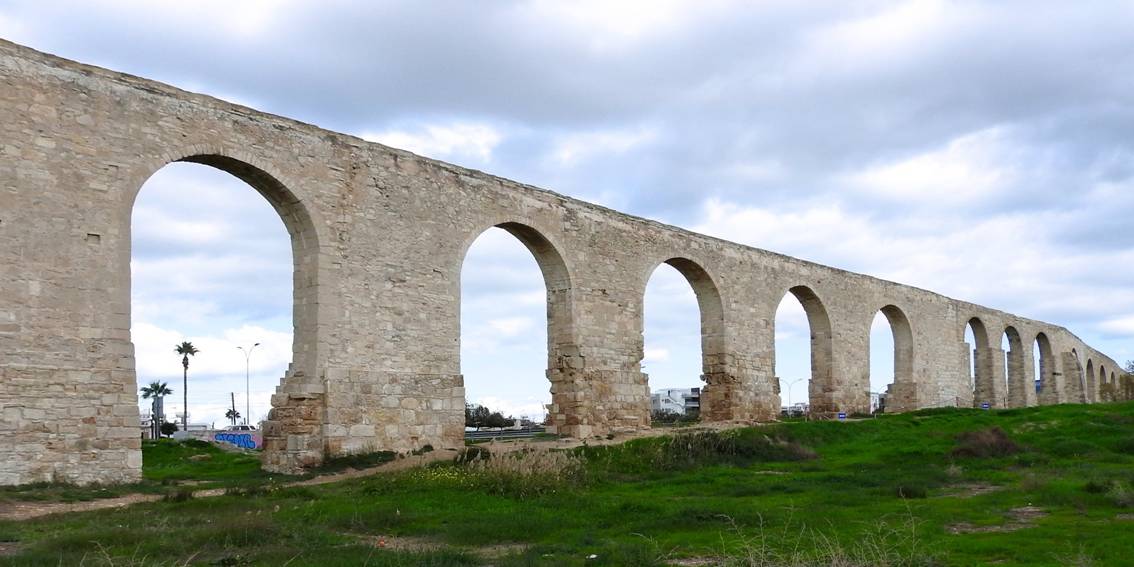Historical Background
The Kamares Aqueduct is a remarkable structure in Larnaca, Cyprus. It dates back to the Roman period. The aqueduct served as a vital water supply system. It transported water from a source near the village of Kamares to Larnaca. The Ottomans later restored and expanded it in the 18th century. This restoration ensured the aqueduct’s continued use for centuries.
Architectural Design
The aqueduct features a series of arches made of stone. These arches support the water channels above. The structure stretches over a considerable distance. Its design showcases advanced engineering for its time. The arches are both functional and aesthetically pleasing. The aqueduct’s construction demonstrates the ingenuity of ancient builders.
Purpose and Function
The primary purpose of the Kamares Aqueduct was to supply water to Larnaca. It addressed the city’s growing need for fresh water. The aqueduct carried water from springs in the mountains. This water was essential for drinking, irrigation, and daily use. The system played a crucial role in the development of the region.
Ottoman Restoration
During the Ottoman rule, the aqueduct underwent significant restoration. The Ottomans recognized its importance and invested in its repair. They added new sections to improve its efficiency. This restoration extended the aqueduct’s lifespan. It continued to function well into the 20th century.
Cultural Significance
The Kamares Aqueduct is a symbol of Larnaca’s history. It reflects the region’s engineering achievements. The aqueduct also represents the blending of Roman and Ottoman influences. Today, it stands as a testament to the area’s rich cultural heritage. Locals and tourists alike admire its historical value.
Preservation Efforts
In recent years, efforts have been made to preserve the aqueduct. Authorities have worked to protect the structure from decay. Restoration projects aim to maintain its original features. These efforts ensure that the aqueduct remains a historical landmark. Preservation work also promotes tourism in the area.
Visitor Experience
The Kamares Aqueduct is a popular tourist attraction. Visitors can walk along the structure and admire its arches. The site offers excellent photo opportunities. Information boards provide details about its history and construction. The aqueduct is particularly striking at sunset. Its silhouette against the sky creates a memorable sight.
Surrounding Area
The aqueduct is located near the outskirts of Larnaca. The surrounding area is peaceful and scenic. Visitors can enjoy a stroll in the nearby park. The park features walking paths and green spaces. The area is ideal for a relaxing day out. It also provides a glimpse into the region’s natural beauty.
Educational Value
The Kamares Aqueduct serves as an educational site. Schools often organize trips to the aqueduct. Students learn about its historical and engineering significance. The site also attracts researchers and historians. They study its construction techniques and historical context. The aqueduct offers valuable insights into ancient water systems.
Conclusion
The Kamares Aqueduct is a masterpiece of ancient engineering. It played a vital role in Larnaca’s development. The structure reflects the region’s rich history and cultural heritage. Preservation efforts ensure its legacy continues. A visit to the aqueduct offers a unique blend of history, architecture, and natural beauty. It remains a must-see landmark in Cyprus.


